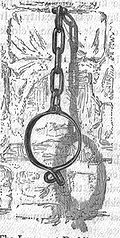Duddingston
In addition to fine period homes, it houses many points of interest including Dr Neil’s Garden, The Sheepsheid and Duddingston Kirk.
Nestled under Arthur’s Seat, the tranquil village of Duddingston is highly sought-after by period property lovers and is a popular tourist destination.
The estate wherein Duddingston Village now lies was first recorded in lands granted to the Tironensian monks of Kelso Abbey by David I of Scotland between 1136 and 1147,[1] and is described as stretching from the Crag (from Craggenmarf, an old name for Arthur's Seat)[2] to the Magdalene Bridge.
Herbert, the first Abbot at Kelso granted the lands of Easter and Wester Duddingston to Reginald de Bosco for an annual rent of 10 merks.
There are several possibilities for the etymology of "Treverlen": All these names originate in the Celtic Brythonic languages, which pre-date the use of the Gaelic or Saxon tongues in Scotland, suggesting that they may go back to the time of some of the earliest settlements on Arthur's Seat.
[6] By 1128, though, at the founding of Holyrood Abbey, the lands of Arthur's Seat seem to have become divided between the Royal Demesne and the estates of Treverlen belonging to Uviet the White.
This he did, in the above-mentioned charter, confirming the previously given entitlement of Traverlin, with its due bounds, as Vineth fully and freely possessed and enjoyed it, with all the easements of the adjoining strother (march), which is called Cameri; and the Crag of the same village[8] to Kelso Abbey.
For instance, from heraldic sources we are told that in May 1290 Edward I granted a protection against proceedings for debts to William de Dodingstone, burgess of Edinburgh.
[13] Cassells says the village was a centre of weaving in the 18th century where "over 40 looms" were in production on The Loan, creating a coarse linen called "Duddingston hardings".
Robert Burns knew him, describing him as a mortal who wandered the precincts of Edinburgh in leaky shoes, a sky-lighted hat and unlikely breeches, who yet was responsible for at least three quarters of Elliot's Encyclopædia Britannica.




